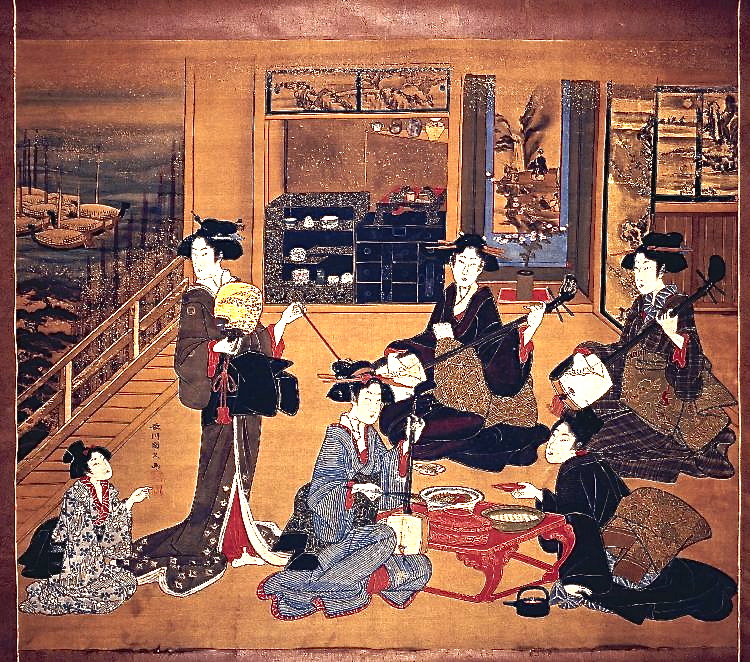 |
The Japanese word for music is "Ongaku" directly translates to comfort. Music has played a big part in Japanese culture. Since its birth, Japanese music has been a huge part of religious ceremonies, theatrical performances, and communal celebration. There are four main types of traditional music, each with their own unique rhythms, harmonies, and even instruments.
A notable feature of traditional Japanese music is its distinctive approach to harmony. Unlike Western music, which often revolves around chord progressions and complex harmonies, traditional Japanese music commonly uses a pentatonic scale. This five-note scale forms the foundation of many pieces, producing a sound that is both simple and hauntingly beautiful. For instance, the yo scale (C, D, E, G, A) and the in scale (C, E♭, F, G, B♭) are regularly employed in traditional instruments such as the shakuhachi (bamboo flute) and the koto (stringed instrument). The emphasis is usually on melodic development over harmonic layering, imparting a spacious and contemplative quality to the music. Koto
Traditional Japanese music incorporates a variety of unique and often intricate rhythmic patterns. The predominant form is 'ma' (space), highlighting the silence and intervals between notes. This principle fosters an immersive listening experience, permitting each tone to reverberate completely. Instruments like the taiko drum and the shamisen are often featured, creating syncopated rhythms that bring a dynamic quality to performances. Traditional drumming, particularly during festivals, displays a spectrum of tempos, ranging from slow, intentional beats to rapid, lively rhythms that capture the festive spirit of the occasion.
 |
| Taiko Drummer |
Traditional Japanese music falls under four main styles- Noh, Gagaku, Kabuki, and Min'yō. Linked above is an example of Noh. This style is known for minimalistic instruments and slow tempo. Gagaku is similar to Noh in its slow tempo, but more orchestral elements are used. Gagaku i performances frequently incorporate dance and are essential to numerous rituals. This style is commonly played at banquets and ceremonies.
“An Introduction to Japanese Traditional Music – What Are the Old Types?” Question Japan, 26 July 2021, questionjapan.com/blog/location-guides/japanese-traditional-music.
Aerith. “Japanese Music History since 1960s and 1970s.” note(ノート), 21 Sept. 2020, note.com/aerith_jp/n/n00a6cf22dfc1.
Malm, WilliaP. “Japanese History, Instruments, Artists, and Facts.” Encyclopedia Britannica, 4 Aug. 2009, www.britannica.com/art/Japanese-music.
Wikipedia contributors. “ Traditional Japanese music.” Wikipedia, 9 Dec. 2023, en.wikipedia.org/wiki/Traditional_Japanese_music.
Comments
Post a Comment